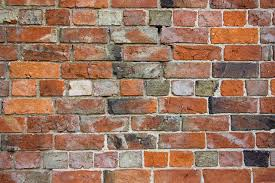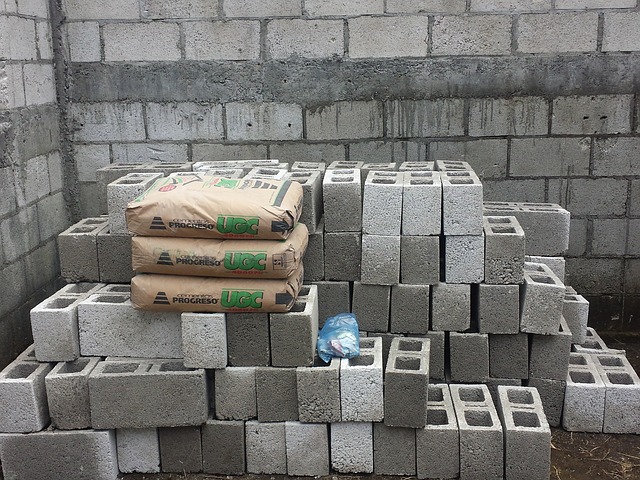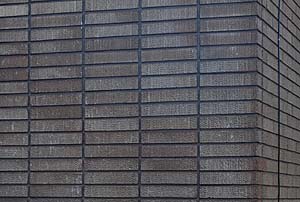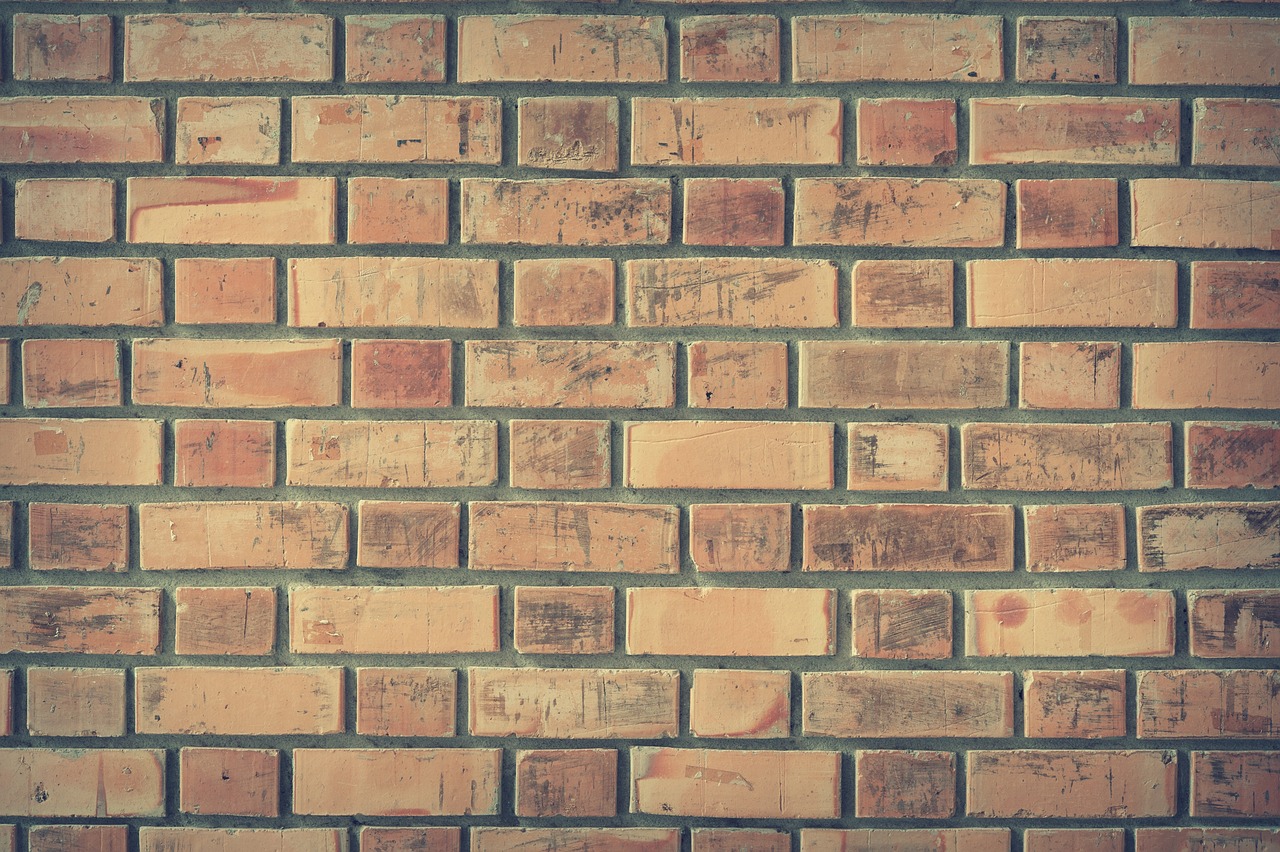Brick sizes
Contents |
[edit] Introduction
There are many different types of brick available, and it is important to both choose your bricks wisely and also check their dimensions to ensure they fit with the design layout.
This article presents a size guide for some of the most commonly-used bricks.

|

|

|
[edit] What size are standard bricks?
The standard co-ordinating size for brickwork is 225 mm x 112.5 mm x 75 mm (length x depth x height). This includes 10 mm mortar joints, so the standard size of a brick itself is 215 mm x 102.5 mm x 65 mm (length x depth x height).
This gives a ratio of 3:2:1, meaning that:
- With a standard mortar joint of 10 mm, a repeating unit of bricks laid in a stretcher bond will be 225 mm lengthwise and 75 mm in height.
- If bricks are laid cross-wise, two 102.5 mm depths plus two mortar joints gives the same repeating unit as the length of one brick plus one mortar joint, i.e. 225 mm.
- If they are laid height wise, three 65 mm heights plus three mortar joints gives the same repeating unit as the length of one brick plus one mortar joint, i.e. 225 mm.
This makes it straight-forward to create complex patterns of bricks within the standard co-ordinating size. See Types of brick bonding for more information.
60 standard bricks laid in a stretcher bond (lengthwise) are required for every square meter of wall.
[edit] What sizes are non-standard bricks?
A list of common brick sizes and their characteristics is set out below:
| Type | Characteristics | Imperial length x depth x height | Metric length x depth x height (mm) |
| Blocks | Constructed using concrete or cement. They may include a hollow core to make them lighter and to improve their insulation. | 440 x (varies) x 215 | |
| Modular | Commonly used for the construction of buildings and homes. | 7-5/8" x 3-5/8" x 2-1/4" | 194 x 92 x 57 |
| Jumbo modular | 7-5/8" x 3-5/8" x 2-3/4" | 194 x 92 x 70 | |
| Queen | Slightly smaller and more cost effective than a modular brick. | 9-5/8" x 3-1/8" x 2-3/4" | 244 x 79 x 70 |
| King | 9-5/8" x 2-3/4" x 2-5/8" | 244 x 76 x 67 | |
| Engineer | Used where strength and water/frost resistance are required. Very sturdy and reliable to use. | 7-5/8" x 3-5/8" x 2-13/16" | 194 x 92 x 71 |
| Closure | Used to finish off a wall, especially at the corners | 7-5/8" x 3-5/8" x 3-5/8" | 194 x 92 x 92 |
| Norwegian | Substantial bricks that can be used in load-bearing walls while still looking good. They have a natural beauty to them. | 11-5/8" x 3-5/8" x 2-13/16" | 295 x 92 x 71 |
| Monarch | Commonly used for long stretches of wall and are very strong. | 15-5/8" x 3-5/8" x 3-5/8" | 397 x 92 x 92 |
| Utility | Very versatile and can be used for a range of construction projects. | 11-5/8" x 3-5/8" x 3-5/8" | 295 x 92 x 92 |
| Norman | These are classic industrial bricks for construction projects and commonly come in red or white. | 11-5/8" x 3-5/8" x 2-1/4" | 295 x 92 x 57 |
| Roman | 11-5/8" x 3-5/8" x 1-5/8" | 295 x 92 x 41 | |
| Quad | 7-5/8 x 3-5/8" x 7-5/8" | 194 x 92 x 194 | |
| Danish hand mould | 7-5/8" x 3-5/8" x 2-1/4" | 194 x 92 x 57 | |
| Meridian | 15-5/8" x 3-5/8" x 3-5/8" | 397 x 92 x 92 | |
| Ambassador | 15-5/8" x 3-5/8" x 2-1/4" | 397 x 92 x 57 |
Note, there may be some variation in these sizes through history and from one supplier to another.
[edit] What are special bricks?
Other than the standard rectangular bricks, a number of special shapes exist for particular circumstances:
- Radial, tapered or arch bricks.
- Angle and cant bricks that form returns and chamfers.
- Bullnose bricks with rounded corners.
- Capping and coping bricks.
- Cill bricks.
- Plinth bricks.
- Slip bricks (thin bricks that can be used for cladding).
- Soldier bricks, that form returns for soldier courses.
Bricks can also be cut or hand made to size.
This article was originally created by --Specified
It has subsequently been edited by others - See full history for more information.
[edit] Related articles on Designing Buildings
IHBC NewsBlog
Purcell’s guidance on RAAC for Listed Buildings in England & Wales
The guidance specifically focuses on Reinforced Autoclaved Aerated Concrete (RAAC) in listed buildings.
IHBC Membership Journal Context - Latest Issue on 'Hadrian's Wall' Published
The issue includes takes on the wall 'end-to-end' including 'the man who saved it'.
Heritage Building Retrofit Toolkit developed by City of London and Purcell
The toolkit is designed to provide clear and actionable guidance for owners, occupiers and caretakers of historic and listed buildings.
70 countries sign Declaration de Chaillot at Buildings & Climate Global Forum
The declaration is a foundational document enabling progress towards a ‘rapid, fair, and effective transition of the buildings sector’
Bookings open for IHBC Annual School 12-15 June 2024
Theme: Place and Building Care - Finance, Policy and People in Conservation Practice
Rare Sliding Canal Bridge in the UK gets a Major Update
A moveable rail bridge over the Stainforth and Keadby Canal in the Midlands in England has been completely overhauled.
'Restoration and Renewal: Developing the strategic case' Published
The House of Commons Library has published the research briefing, outlining the different options for the Palace of Westminster.
Brum’s Broad Street skyscraper plans approved with unusual rule for residents
A report by a council officer says that the development would provide for a mix of accommodation in a ‘high quality, secure environment...
English Housing Survey 2022 to 2023
Initial findings from the English Housing Survey 2022 to 2023 have been published.
Audit Wales research report: Sustainable development?
A new report from Audit Wales examines how Welsh Councils are supporting repurposing and regeneration of vacant properties and brownfield sites.


















Comments
[edit] To make a comment about this article, click 'Add a comment' above. Separate your comments from any existing comments by inserting a horizontal line.
Really helpful to have lots of different brick sizes in a single article.